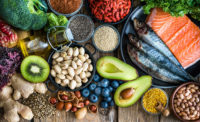2015 Dietary Guidelines: Smarter Consumer Choices Can Impact Foodborne Outbreaks

The Scientific Report of the 2015 Dietary Guidelines Advisory Committee, submitted this month to the Secretaries of the U.S. Department of Health and Human Services as well as the U.S. Department of Agriculture, is suggesting that consumer behavior––along with other practices put in place by government and private sectors––can play a role in reducing cases of foodborne illnesses.
Fresh produce is at the forefront of the debate since raw, uncooked foods such as leafy greens and other fruits and vegetables have been associated with foodborne outbreaks in recent months and years. To help consumers become more aware, the U.S. Food and Drug Administration will be releasing a list of foods deemed “high-risk”. The general ideas is that consumers––who are generally thought to be making more healthy food choices––can help to decrease the sheer volume foodborne illnesses by learning what to look for, and how to properly wash and/or thoroughly cook fresh produce.
According to the report, 117 million American adults suffer from at least one preventable chronic disease. That’s in addition to 155 million Americans that are considered overweight or obese. The Dietary Guidelines Advisory Committee believes that when consumers make smarter food choices, these problems will also be positively impacted.
The report comes about 7 months before the Food Safety Modernization Act’s final rule on produce safety is due. This court ordered rule will focus on standards related to growing, packing and storing produce for human consumption. The report is open for public comment through April 8, 2015.
Looking for a reprint of this article?
From high-res PDFs to custom plaques, order your copy today!





